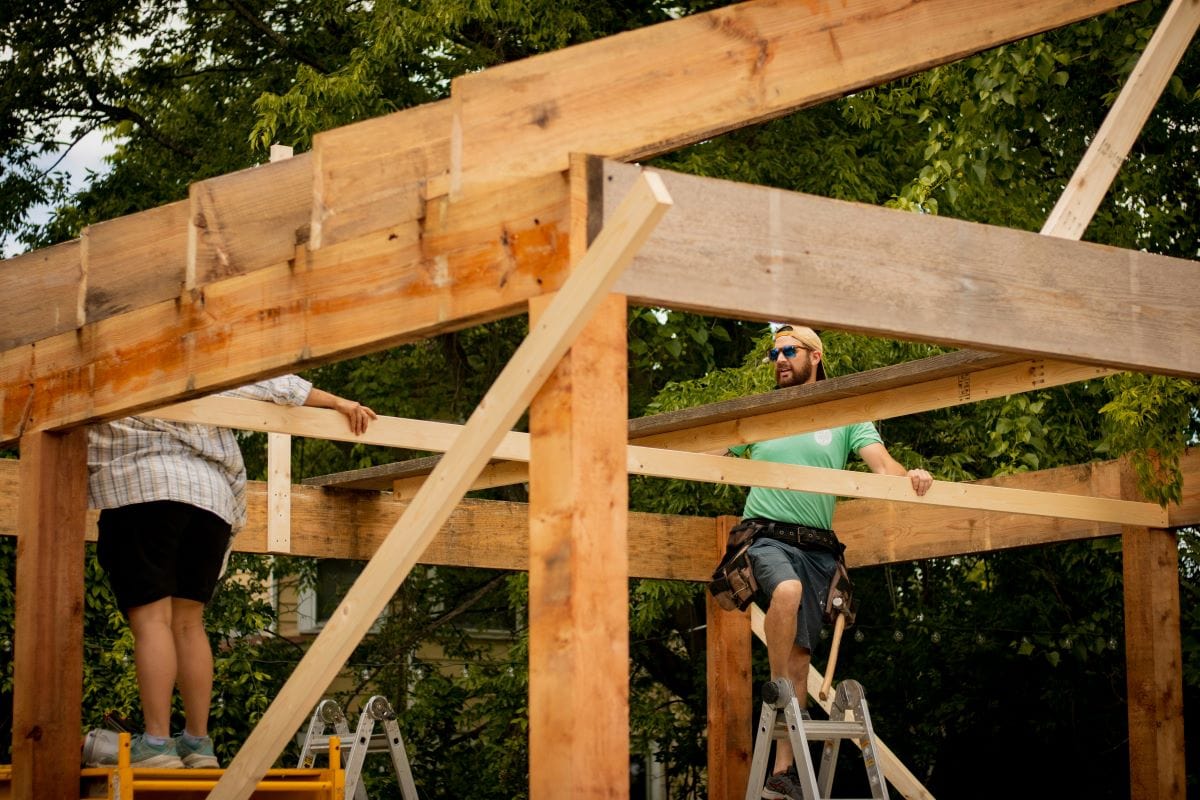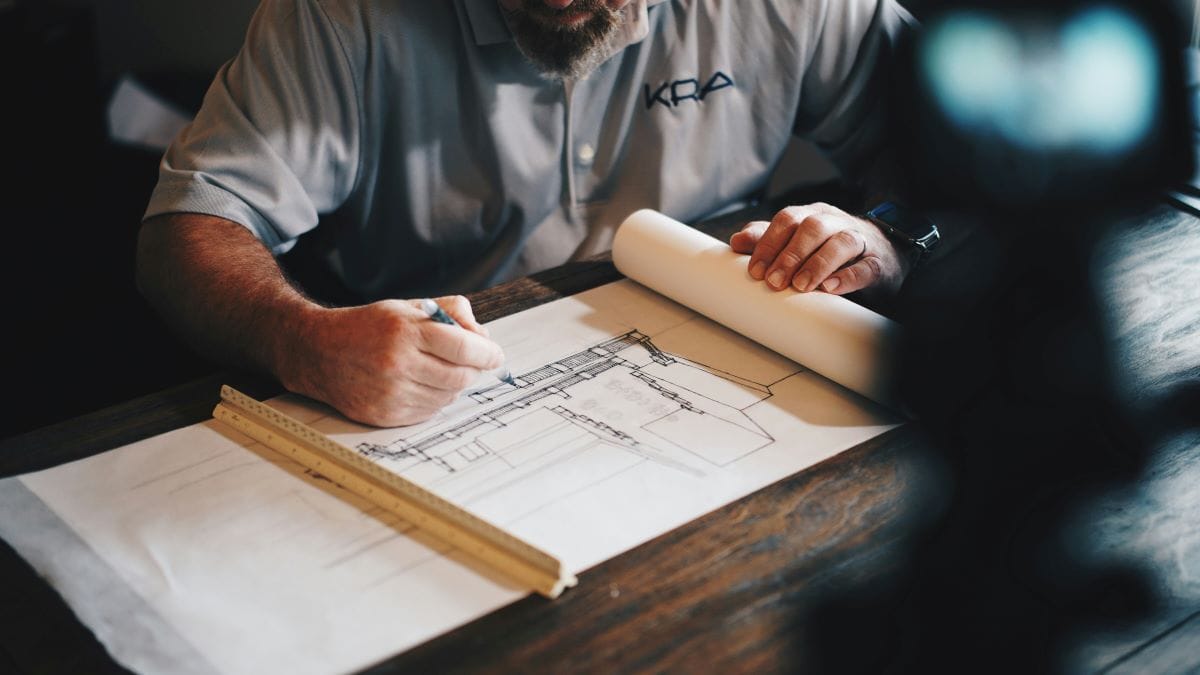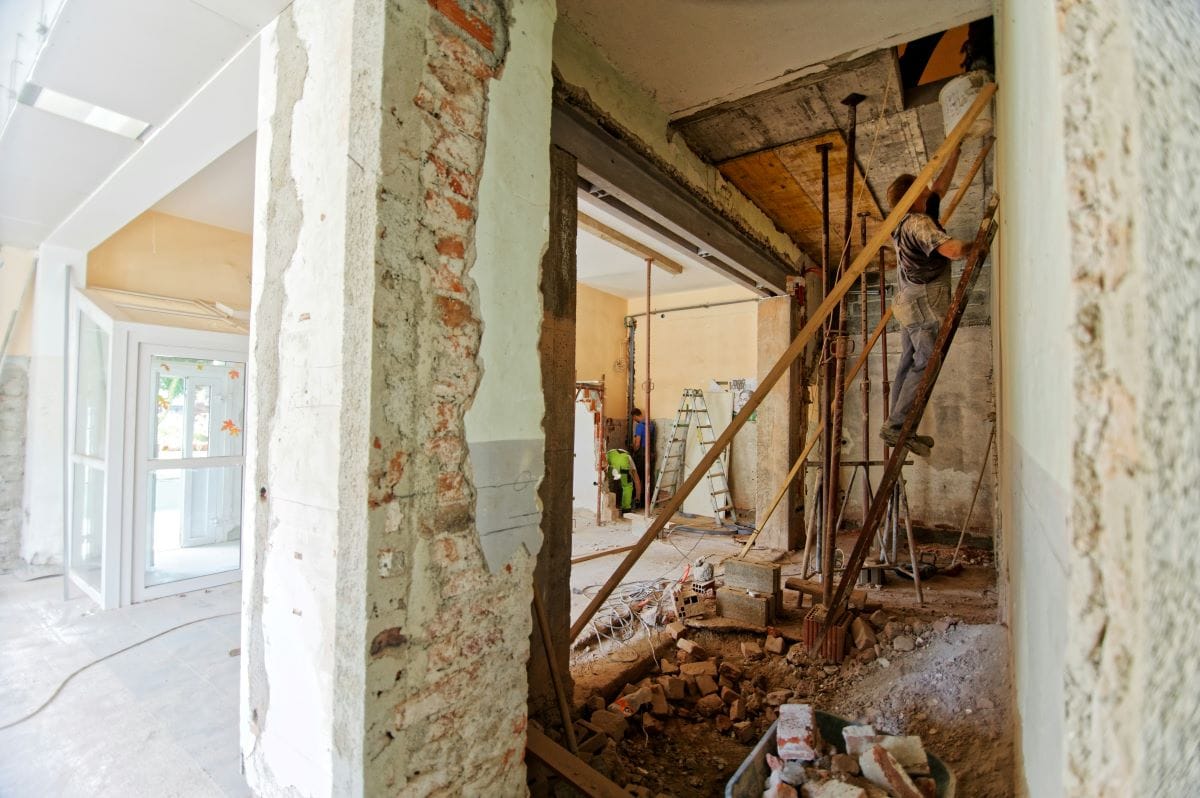The Dream of Remodeling and Renovating a Family Home
Building or renovating a family home is a dream shared by many. It’s a significant milestone that marks the beginning of a new chapter filled with memories and the comfort of a place to call your own. Whether you’re starting from scratch or breathing new life into an existing property, home renovations are both exciting and intimidating.
At the heart of any successful home building or home renovation lies careful planning and budgeting. This sets the foundation for the entire endeavor, guiding decisions and ensuring that dreams align with financial realities. From envisioning the perfect layout to selecting materials and hiring contractors, every step requires thoughtful consideration to achieve the desired outcome within the allocated budget.
There are a few essential aspects of building or revamping a family home. From budgeting and design considerations to managing the chaos of projects and adding personal touches, we’ll provide practical tips to guide you through the process. So, whether you’re just starting to contemplate your dream home or knee-deep in makeovers, let’s explore the path to creating a space that reflects your family’s unique style and needs.

Budgeting: The Cost of Home Improvement
Assessing Your Financial Situation
Before starting any home building or home renovation project, it’s essential to assess your financial situation thoroughly. Take stock of your income, savings, and any available funds for the project. Consider factors such as existing debts, ongoing expenses, and future financial goals to determine a realistic budget that won’t break the bank.
Setting a Realistic Budget
Once you’ve got your financial standing sorted, it’s time to set a realistic budget. Factor in all potential costs, including construction materials, labor, permits, and unexpected expenses. You can research the average costs of various materials, projects, and decor to get the most accurate entire cost mapped out. The fewer surprises, the better!
Be honest with yourself about what you can afford and avoid overstretching your finances to prevent undue stress and financial strain down the road.
Allocating Funds for Different Aspects of the Project
Divide your budget into categories to allocate funds for different aspects of the project. Consider prioritizing essentials such as structural and functional upgrades before allocating funds for aesthetic enhancements. A few questions that might help you prioritize your budget include:
- Are you looking to increase the property value of your home?
- Can you live with the interior of your home for an interim if necessary?
- Is everything a remodeling project, or are some projects a simple refresh?
- What can a fresh coat of paint accomplish?
- How much elbow grease are you willing and able to put in?
- What truly needs replaced?
- Will you recoup your costs in the investment?
Determine the percentage of your budget to allocate to each category, keeping in mind the importance of maintaining a balance between quality and cost-effectiveness.
Tips for Budget Management and Cost-Saving Strategies
- Research and Compare Prices: Take the time to research and compare prices for materials, fixtures, and appliances to ensure you’re getting the best value for your money.
- Seek Multiple Quotes: Obtain quotes from multiple contractors and vendors to compare costs and negotiate favorable terms.
- Consider DIY Options: Explore DIY options for tasks that you feel confident tackling yourself, such as painting or minor repairs, to be cost-effective.
- Plan for Contingencies: Set aside a contingency fund to cover unexpected expenses or project delays, ensuring you’re prepared for any unforeseen challenges.
- Monitor Expenses: Keep track of your expenses throughout the project to stay within budget and identify areas where cost-saving measures may be necessary.

Upgrades and Replacements that Reflect Your Family
Ideas for Identifying Your Family’s Lifestyle and Needs
Understanding your family’s lifestyle and needs is a big part of designing spaces that reflect your family’s essence. Consider the following factors:
- Family Dynamics: Take into account the size of your family, the ages of family members, and any specific needs or preferences they may have.
- Daily Activities: Evaluate the activities that take place within your home regularly, such as cooking, entertaining, working, or relaxing.
- Hobbies and Interests: Consider the hobbies and interests of your family members and how you can incorporate spaces dedicated to these activities.
Creating Functional and Versatile Interior Designs for Every Room
Designing functional and versatile living spaces ensures that your home caters to the diverse needs of your family. Here’s how to achieve this:
- Open Floor Plans: Opt for open floor plans that facilitate fluid movement between rooms and encourage interaction among family members.
- Multi-Purpose Furniture: Invest in multi-purpose furniture that serves multiple functions, such as storage ottomans, convertible sofas, or modular shelving units, to spruce up your space and enhance the value of your home.
- Flexible Layouts: Design flexible layouts that can easily adapt to changing needs and preferences over time, so you won’t need to replace the look and feel of your designs soon.
Incorporating Decor, Personal Style, and Aesthetics
Infusing your style and aesthetics into your home design adds a unique touch that reflects your family’s personality. Consider the following tips:
- Color Palette: Choose a color palette that resonates with your family’s tastes and preferences, whether it’s bold and vibrant or soft and serene.
- Textures and Materials: Experiment with textures and materials to add depth and visual interest to your spaces, such as exposed brick, natural wood planks, peel-and-stick tiles, or textured fabrics.
- Art and Decorations: Display artwork, photographs, and decor items that hold sentimental value or reflect your family’s interests and experiences.
Balancing Everything You Need with Design Preferences
Balancing practicality with design preferences ensures that your home is not only visually appealing but also functional and efficient. Here are some strategies to achieve this balance:
- Prioritize Needs: Identify your family’s must-have features and prioritize them in your design plan to ensure they’re addressed first.
- Consider Long-Term Maintenance: Choose materials and finishes that are durable, easy to maintain, and resistant to wear and tear, especially in high-traffic areas.
- Seek Professional Advice: Consult with interior designers or architects who can offer expert guidance on balancing aesthetics with practicality and functionality.

Minimizing Chaos During Home Renovations Without Hiring a Professional
Planning for Potential Disruptions
Anticipating potential disruptions and preparing accordingly can help minimize chaos during renovations. Consider the following strategies:
- Temporary Living Arrangements: Explore temporary housing options for you and your family during the home renovation period, such as staying with relatives, renting a short-term apartment, or utilizing extended-stay accommodations.
- Establish a Communication Plan: Maintain open lines of communication with your contractors and workers to address any concerns or issues that may arise. Establish a preferred method of communication and schedule regular check-ins to stay informed about the progress of the project.
- Create a Contingency Plan: Prepare for unexpected challenges or delays by developing a contingency plan that outlines alternative solutions and backup options. Having a contingency fund set aside can provide peace of mind and help you navigate any unforeseen circumstances.
Establishing Clear Communication with Contractors and Workers
Effective communication, viewed as a critical makeover tool, is essential for ensuring that everyone involved in the redevelopment project is on the same page and looking to increase the property’s value. Consider the following communication strategies:
- Regular Meetings: Schedule regular meetings with any hired workers to discuss project updates, timelines, and any concerns or issues that need to be addressed.
- Written Agreements: Document all agreements and expectations in writing to avoid misunderstandings or disputes later. Clearly outline project details, timelines, budget constraints, and any specific requirements or preferences you have.
- Designated Contact Person: Designate a primary contact person who will serve as the main point of contact for communication between you, workers, and other stakeholders involved in the project.
Creating a Timeline and Schedule for the Renovation Process
Developing a comprehensive timeline and schedule for a home renovation is essential for keeping the project on track and minimizing disruptions. Consider the following tips:
- Break Down Tasks: Break down projects into smaller tasks and milestones, assigning specific deadlines and responsibilities to each.
- Factor in Buffer Time: Allow for buffer time in your schedule to account for unexpected delays or setbacks that may arise during the process.
- Regular Progress Checks: Schedule regular progress checks to assess the status of the project and ensure that it is proceeding according to plan. Adjust the timeline and schedule as needed to address any deviations or unforeseen challenges.
D. Strategies for Minimizing Stress and Maintaining a Sense of Normalcy
Home renovations can be stressful, but there are several strategies you can employ to minimize stress and maintain a sense of normalcy during the process:
- Designated Relaxation Zones: Designate areas of your home that will remain unaffected as relaxation zones where you can retreat and unwind.
- Practice Self-Care: Make time for self-care activities such as exercise, meditation, or spending time outdoors to alleviate stress and maintain a positive mindset.
- Stay Flexible: Remain flexible and adaptable in your approach to the process, recognizing that there may be unexpected challenges or changes along the way.

Creating a Detailed Easy Home Renovation Plan
Conducting a Thorough Assessment of the Property
Before diving into restorations, it’s crucial to conduct a thorough assessment of your property to identify areas in need of transformative projects. Here’s how to approach it:
- Inspect Structural Integrity: Assess the structural integrity of your home, including the foundation, walls, roof, and supporting beams, to identify any signs of damage or deterioration, and consider the makeover as an incentive to improve your house’s durability.
- Evaluate Electrical and Plumbing Systems: Evaluate the condition of your electrical and plumbing systems to ensure they meet current safety standards and codes. Consider upgrading outdated systems to improve efficiency and functionality.
- Address Existing Issues: Identify any existing issues or concerns, such as water damage, mold, or pest infestations, and develop a plan to address them before proceeding.
Identifying Necessary Renovations and Improvements
Based on your property assessment, prioritize improvements based on their urgency and impact on the overall functionality and aesthetics of your home. Consider the following factors:
- Essential Upgrades: Prioritize essential upgrades that address safety concerns, improve energy efficiency, or enhance the livability of your home.
- Aesthetic Enhancements: Identify aesthetic enhancements that will enhance the visual appeal and ambiance of your home, including features like outdated fixtures, finishes, or architectural elements.
- Long-Term Investments: Consider long-term investments that will add value to your home and improve its resale potential, such as kitchen or bathroom remodels, energy-efficient upgrades, or square footage additions.
Obtaining Permits and Approvals
Before commencing any home renovations, ensure you obtain the necessary permits and approvals from local authorities and governing bodies. Here’s what you need to know:
- Research Permit Requirements: Familiarize yourself with local building codes, zoning regulations, and permit requirements specific to your area to ensure compliance with all applicable regulations.
- Submit Permit Applications: Prepare and submit permit applications for any projects that require approval from local authorities. Be sure to include all necessary documentation and information to expedite the approval process.
- Schedule Inspections: Coordinate with local building inspectors to schedule inspections at key milestones throughout the process to ensure compliance with all applicable codes and regulations.
Hiring Qualified Professionals and Contractors
Selecting the right professionals is essential to the success of your project. It can be time-consuming, but putting in the effort upfront helps ensure you don’t hit unexpected road bumps along the way. Here’s how to choose wisely:
- Research and Vet Candidates: Take the time to research and vet potential professionals, checking references, credentials, and past work examples.
- Get Multiple Quotes: Obtain quotes from multiple contractors to compare costs and services before making a decision. Consider factors such as experience, expertise, and reputation when evaluating candidates.
- Establish Clear Expectations: Communicate your expectations, preferences, and budget constraints to potential contractors, and obtain written estimates and contracts detailing the scope of work, timeline, and payment terms.

Incorporating Stylish and Sentimental Elements
Preserving and Incorporating Existing Features with Sentimental Value
When remodeling your family home, you may want to preserve and incorporate existing features with sentimental value. Consider the following approaches:
- Retain Original Features: Preserve original architectural features, such as exposed brick walls, hardwood floors, or decorative molding, that hold sentimental value and contribute to the character of your home.
- Restore Family Heirlooms: Restore and incorporate family heirlooms, such as antique furniture, heirloom textiles, or vintage fixtures, into your home’s design to honor your family’s history and heritage.
Integrating Personal Touches and Family Heirlooms into the Design
Infusing personal touches and family heirlooms into your home’s design adds a layer of authenticity and nostalgia. Here’s how to do it:
- Display Family Photos: Create a gallery wall or display shelves to showcase family photos, artwork, and memorabilia that evoke fond memories and stories.
- Use Personalized Decor: Incorporate personalized items, such as monogrammed throw pillows, custom artwork, or handmade crafts, that reflect your family’s interests and personalities.
- Repurpose Family Treasures: Repurpose family treasures, such as vintage china, quilts, or silverware, into functional pieces or focal points in your home’s design.
Creating Spaces that Evoke Positive Memories and Emotions
Designing spaces that evoke positive memories and emotions enhances the overall ambiance and atmosphere of your home. Consider the following tips:
- Designate Memory Spaces: Create dedicated areas within your home that serve as memory spaces, such as a reading nook with a cozy chair and family photos or a display cabinet showcasing cherished mementos.
- Incorporate Symbolic Elements: Incorporate symbolic elements into your home’s design that hold personal significance, such as a family crest, motto, or emblem, subtly woven into architectural details.
- Foster Connection and Togetherness: Design spaces that encourage connection and togetherness, such as a communal dining area or cozy seating arrangement, where family members can gather, share stories, and create new memories.

Establishing Temporary Living Arrangements
Considering Temporary Housing Options
During the home renovation, consider temporary housing options to ensure your family’s comfort and well-being. Here are some temporary housing solutions to explore, depending on the extent of your project:
- Staying with Relatives or Friends: Reach out to relatives or friends who may be willing to accommodate your family temporarily. This option offers familiarity and support during the transition period.
- Renting a Short-Term Apartment: Explore short-term apartment rentals or extended-stay accommodations in your area. These options provide flexibility and convenience while allowing you to maintain a sense of independence and privacy.
- Utilizing Extended-Stay Hotels or Serviced Apartments: Consider staying in extended-stay hotels or serviced apartments that offer amenities such as fully equipped kitchens, laundry facilities, and housekeeping services for added comfort and convenience, and look into any tax-deductible expenses.
Planning for Accommodations that Meet Your Family’s Needs
When selecting temporary housing accommodations, consider your family’s specific needs and preferences. Here’s what to keep in mind:
- Space Requirements: Choose accommodations that offer adequate space and amenities to accommodate your family comfortably, including bedrooms, bathrooms, and living areas.
- Location Considerations: Select accommodations located near your home or to minimize commuting time and inconvenience. Consider factors such as school districts, access to amenities, and transportation options when choosing a location.
- Accessibility Features: If you have family members with special needs or mobility concerns, prioritize accommodations that offer accessibility features such as wheelchair ramps, elevators, or accessible bathrooms.
Tips for Staying Organized and Comfortable During the Transition Period
Navigating temporary living arrangements during restorations can be challenging, but with careful planning and organization, you can ensure a smooth transition. Consider the following tips:
- Pack Essentials: Pack essential items and belongings that you’ll need during your temporary stay, including clothing, toiletries, medications, and important documents.
- Create a Home Away from Home: Personalize your temporary living space with familiar items and comforts from home, such as favorite bedding, photos, or decorative touches, to create a sense of familiarity and comfort.
- Stay Flexible: Remain flexible and adaptable to unexpected changes or challenges that may arise during the transition period. Maintain open communication with your family members and contractors to address any concerns or issues promptly.

DIY Budget Management
Tracking Expenses and Staying Within Budget
Effective budget management is essential to ensure the success of your home renovation. Here’s how to track expenses and stay within budget:
- Create a Detailed Budget: Develop a comprehensive budget that outlines all anticipated expenses for the project, including materials, labor, permits, and contingency funds.
- Track Expenses: Keep meticulous records of all expenses incurred throughout the process, including receipts, invoices, and payments made to contractors and vendors.
- Regularly Review Budget: Regularly review your budget to compare actual expenses against projected costs and identify any discrepancies or areas where costs are exceeding expectations.
- Adjust Spending as Needed: If you find that expenses are exceeding your budget, adjust spending accordingly by prioritizing essential items and exploring cost-saving measures to stay on track.
Handling Unexpected Costs and Contingencies
Unexpected costs and contingencies are inevitable during home renovations, but with proper planning and preparation, including a budget calculator, you can mitigate their impact and increase the value of your home. Consider the following strategies:
- Establish a Contingency Fund: Set aside a contingency fund to cover unexpected costs or unforeseen challenges that may arise during the process. Aim to allocate around 10-20% of your total budget for contingencies to ensure you’re adequately prepared for any surprises.
- Anticipate Hidden Costs: Anticipate potential hidden costs associated with remodels, such as structural repairs, code compliance upgrades, or unforeseen issues uncovered during demolition or construction.
- Consult with Professionals: Seek advice from experienced professionals, such as contractors, architects, or project managers, to identify potential risks and develop contingency plans to address them proactively.
Adjusting the Budget as Needed Throughout the Project
Flexibility is key when it comes to budget management, as unexpected changes or developments may require adjustments to your budget. Here’s how to adapt your budget as needed throughout the project:
- Prioritize Essential Expenses: Prioritize essential expenses and allocate funds accordingly to ensure that critical aspects of the renovation project are completed within budget.
- Explore Cost-Saving Measures: Look for opportunities to reduce costs without sacrificing quality by exploring cost-saving measures such as DIY projects, purchasing materials in bulk, or negotiating lower prices with contractors and vendors.
- Communicate with Stakeholders: Maintain open communication with all stakeholders involved in the renovation project, including contractors, vendors, and family members, to ensure everyone is aware of any budgetary constraints or changes and can adjust their plans accordingly.

Final Touches and Details
Completing Finishing Touches and Final Touches
As your home renovation project nears completion, it’s time to focus on adding the final touches that will bring your vision to life. Here’s how to ensure every detail is perfected:
- Install Fixtures and Hardware: Install light fixtures, faucets, cabinet hardware, and drawer handles to add functionality and style to your spaces.
- Apply Paint and Wallpaper: Apply paint or wallpaper to walls and ceilings to add color, texture, and personality to your rooms. You may even add accent walls or decorative wallpaper for added visual interest.
- Hang Window Treatments: Hang curtains, blinds, or shades to enhance privacy, control light levels, and add warmth and coziness to your rooms.
- Accessorize: Add decorative accessories such as throw pillows, rugs, artwork, and decorative objects to personalize your spaces and create a cohesive look.
- Clean and Declutter: Take the time to clean and declutter, removing construction debris, dust, and debris to reveal the beauty of your new spaces.
Quality Control and Inspection Before Moving In
Before moving back into your new space, be sure to conduct a thorough quality control inspection to ensure everything meets your expectations and standards. Here’s what to consider:
- Inspect Workmanship: Inspect the quality of workmanship and craftsmanship, paying attention to details such as finishes, trim work, and installation accuracy.
- Test Functionality: Test the functionality of all systems and components, including electrical, plumbing, HVAC, and appliances, to ensure everything is in proper working order.
- Address Any Deficiencies: Identify any deficiencies or issues that need to be addressed and communicate them to your contractors or builders promptly to ensure they’re resolved before moving in.
- Final Walk-Through: Conduct a final walk-through with your contractors or builders to review all completed work and confirm that everything meets your specifications and standards.
Celebrating the Accomplishment of Creating Your Dream Family Home
Finally, take the time to celebrate the accomplishment of creating your dream makeover. Reflect and celebrate with your loved ones. Here are some ways to commemorate this milestone:
- Host a Housewarming Party: Invite friends, family, and neighbors to celebrate your new space with a housewarming party or gathering. Share stories about the process and give guests a tour of your new spaces.
- Create a Scrapbook or Photo Album: Document the journey with photos, notes, and memorabilia, and create a scrapbook or photo album to commemorate the experience.
- Enjoy Quality Time Together: Take time to relax and enjoy your new house with your family. Whether it’s cooking meals together in your new kitchen, cozying up in the living room, or hosting gatherings with loved ones, savor the moments and memories you create in your dream family home.
Curb Appeal: From Refinishing Bathrooms and Exterior Siding to Minor Kitchen Remodels and More
Buying a house is a big commitment; home renovations are, perhaps, an even bigger one. Careful planning, meticulous attention to detail, and unwavering dedication are deciding factors in the success of any home renovation.
And remember, if you find yourself needing a little inspiration or motivation, check out some HGTV before-and-afters or cozy up with a little renovation-themed fiction for a good time.
As you consider your next overhaul, remember the importance of careful planning, budgeting, and attention to detail in achieving success. Embrace the lessons you’ll learn along the way and carry them forward in future endeavors. And above all, have some fun in the process!
You might also be interested in…
If you’re looking for more renovation or DIY home inspiration, check out Daily Mom’s Home Section for tons of tips, tricks, and DIY ideas!
CONNECT WITH DAILY MOM
💖 NEWSLETTER: DAILY READS IN YOUR INBOX 💖
Sign up to receive our picks for the best things to do, see and buy so you can relax and focus on more important tasks! Let us help you be the best version of yourself you can be!
BE SOCIAL WITH US
📌 LOVE IT? PIN IT!📌

Photo Credits: Photo by Milivoj Kuhar on Unsplash, Photo by Annie Gray on Unsplash, Photo by Roselyn Tirado on Unsplash, Photo by Daniel McCullough on Unsplash, Photo by Scott Graham on Unsplash, Photo by Conor Brown on Unsplash, Photo by ConvertKit on Unsplash, Photo by Towfiqu barbhuiya on Unsplash, Photo by Lefty Kasdaglis on Unsplash











































